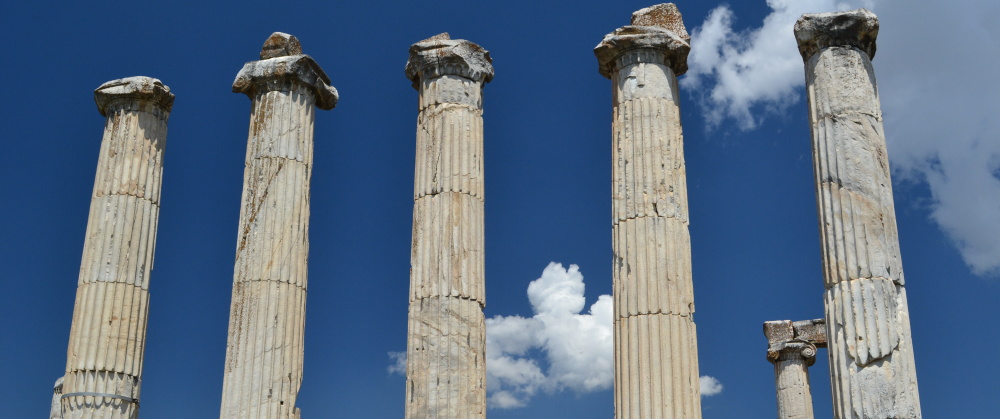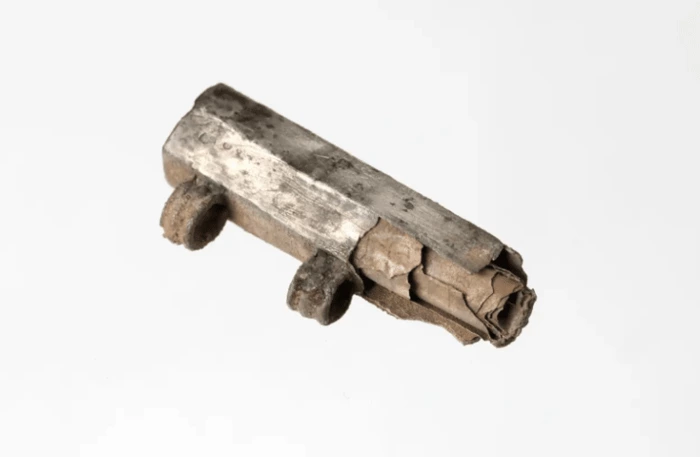
The purpose of this book is to explore the question: when were the twenty-seven books of the New Testament as well as 1 Clement, the Didache, the Epistle of Barnabas, and the Shepherd of Hermas composed? Jonathan Bernier’s answer to this query is that, aside from the Pauline epistles, many of these works were written some twenty to thirty years before most scholars conclude they were composed:
| Early Christian Work | Date (all dates are in AD) |
| Matthew | 45–49 |
| Mark | 42–45 |
| Luke | 59 |
| John | 60–70 |
| Acts | 62 |
| Romans | Winter of 56/57 |
| 1 Corinthians | Early 56 |
| 2 Corinthians | Late 56 |
| Galatians | 47–52 |
| Ephesians | 57–59 |
| Philippians | 57–59 |
| Colossians | 57–59 |
| 1 Thessalonians | 50–52 |
| 2 Thessalonians | 50–52 |
| 1 Timothy (if Pauline) | 63 or 64 |
| 1 Timothy (if not Pauline) | 60–150 |
| 2 Timothy (if Pauline) | 64–68 |
| 2 Timothy (if not Pauline) | 60–150 |
| Titus (if Pauline) | 64–68 |
| Titus (if not Pauline) | 60–150 |
| Philemon | 57–59 |
| Hebrews | 50–70 |
| James | Before 62 |
| 1 Peter | 60–69 |
| 2 Peter (if Petrine) | 60–69 |
| 2 Peter (if not Petrine) | 60–125 |
| 1 John | 60–100 |
| 2 John | 60–100 |
| 3 John | Before 100 |
| Jude | Before 96 |
| Revelation | 68–70 |
| 1 Clement | 64–70 |
| Didache | 60–125 |
| Epistle of Barnabas | 70–132 |
| Shepherd of Hermas | 70–125 |
Bernier arrived at these dates from what he calls a synthetic treatment of early Christian history that “considers judgments on a disparate range of distinct yet densely interconnected matters and seeks to integrate them into a complex but unified synthesis.” The reason for this type of treatment is that the issue of dating these Christian works tends “to spiderweb into a need to treat one or more of” the above-mentioned works (1).
Bernier divides his monograph into an Introduction, ten chapters, which form the bulk of the book, and a Conclusion. In the Introduction, he places his work into the history of scholarship on the question of dating the New Testament books, especially the work of James A. T. Robinson, Redating the New Testament (3–17), and defines its parameters, method, and goals (17–32). Bernier’s aim is to provide relative dates for the New Testament books and four other early noncanonical Christian works from the synchronization of events of early Christian history, the contextualization of these Christian literary sources, and from what we know of the authors of these works, what Bernier calls authorial biography (22–27).
The first and second chapters of Rethinking focus on the Synoptic Gospels and Acts. Bernier accepts that Mark was composed first, Matthew second, and Luke and Acts (by the same author) third. His main foci of the first chapter is: (1) whether or not Jesus’s prediction of Jerusalem’s destruction requires a post AD 70 date (see Matthew 22:7; 24:1–2; 26:59–61; 27:51; Mark 13:1–2; 14:57–58; 15:38; Luke 19:41–44; 21:5–6, 20–28; 23:45) and (2) the dating of Luke-Acts. Bernier concludes that nothing in Matthew, Mark, or Luke demands a post AD 70 date. To the contrary, Jesus’s warning about the abomination of desolation and the events connected to it (Matthew 24:15–31; Mark 13:14–27) “are more fully intelligible before 70 than they are after” and the references to Jesus’s Second Coming (Matthew 16:28; 24:34; Mark 9:1; 13:30; Luke 9:27; 21:32) favor an earlier, rather than a later, date (66–67). Moreover, because Acts ends with Paul awaiting trial, it most likely dates before AD 62 (67).
In the second chapter, Bernier contextualizes the Synoptic Gospels and examines biographical data from them, proposing that the lack of emphasis on the Gentile mission in Mark places it before the Jerusalem Council of Acts 15 (AD 48) and Matthew’s and Luke’s Gospels sometime after that but before AD 62 (because he dates Acts to AD 62 and places Matthew before Luke) (70–71). In addition, Marcan authorship of Mark and its connection to Peter in Rome is plausible and the “we-passages” of Acts suggest that the author was a companion of Paul (82–84).
The third and fourth chapters of Rethinking examine the Johannine documents, John’s Gospel, 1–3 John, and Revelation. External evidence, namely P52, places John before AD 120, the prediction of Peter’s death (John 21:18–19) tends to support a time when the apostle was alive, Jesus’s comment about the author of John remaining alive until the Second Coming (John 21:22–23) does not require the Beloved Disciple to be dead at the time of composition, and Jesus’s references to the temple (John 2:19–22; 4:21) are intelligible before or after its destruction. However, Bernier finds that the mentioning of the pool of Bethesda as existing at the time of the Gospel’s composition suggests a date before AD 70 (102). Moreover, he argues that past reasons for a late date of John, namely Christology and the author’s supposed knowledge of Gnosticism, are flawed. He proposes that John’s Christology is as “high” as Paul’s and that John does not evince knowledge of second century AD Gnosticism (108). For these reasons, he dates John before AD 70.
From external evidence, 1–3 John date before AD 150, AD 175, and AD 250 respectively. Internally, the Christology of 1–2 John suggests that these letters are not earlier than Paul’s epistles (115–17) and the most probable candidates for authorship of these missives are John the son of Zebedee or John the Elder, both of which lived in the first century AD (118). Concerning Revelation, Bernier hypothesizes that the beasts of Revelation 13:1–18 make more sense before Nero’s death in AD 68 than after, and the references to the Jerusalem temple and Jerusalem in Revelation 11:1–2, 13 are more intelligible before AD 70 than after (123). Internally, the author’s concern for food offered to idols makes more sense between AD 40 and 60 (when early Christians were debating under what circumstances Gentiles could enter their movement), the references to Rome as Babylon cannot exclude a pre-AD 70 date, and that the work probably dates between AD 68 and 70 (126).
In chapters five and six, Bernier tackles the Pauline corpus. The former chapter discusses Pauline authorship—Bernier accepts the undisputed letters, that Paul contributed to Ephesians, Colossians, and 2 Thessalonians, and he offers possible date ranges that include and exclude Pauline authorship for the Pastorals (1–2 Timothy and Titus)—and the importance of Acts for dating Paul’s letters (133–43). In chapter six, he attempts to date and provide provenances for each epistle in the corpus. In the process, he places Galatians as the first extant Pauline letter, the Prison Epistles in Caesarea Maritima in the late AD 50s, and the Pastorals to the AD 60s if genuine, but between AD 60 and the mid-second century AD if they are not (179–82).
Chapters seven and eight discuss the Catholic Epistles, less 1–3 John. In chapter seven, Bernier examines Hebrews and James. Concerning the former, the reference to the temple (Hebrews 10:1–3) is more intelligible if the temple were still standing and the mentioning of Timothy places the work after this individual entered Christian ministry around AD 50 (193). Hebrews 2:3 and the reference to the author and his audience hearing the Gospel from those who heard it from Jesus presupposes an author who has not heard the earthly Jesus. All these data place the missive between AD 50 and 70 (194–95). Decisive external and internal evidence to date the letter of James is lacking. However, it’s probable author, James the brother of Jesus, places it before AD 62 (209).
Chapter eight of Rethinking considers 1–2 Peter and Jude. Concerning 1 Peter, Bernier notes that decisive external and internal data to help date this missive are lacking. However, because Peter composed it, it dates between AD 60 and 69 (223). Second Peter must postdate the Pauline letters (2 Peter 3:15b–16) and this epistle is the strongest candidate for a pseudonymous letter in the New Testament (229). Like 1 Peter, there is not much data to date Jude. However, it was probably written by the historical Jude who probably died at the end of Domitian’s reign. Therefore, the letter probably predates AD 96.
In chapters nine and ten, Bernier examines the noncanonical writings,1 Clement, the Didache, the Epistle of Barnabas, and the Shepherd of Hermas. Chapter nine considers the first two. Concerning 1 Clement, Bernier contends that the work’s reference to the deaths of Peter and Paul (1 Clement 5:4–7) call for a date after AD 64 and that 1 Clement is more intelligible before AD 70 than after (250–51). With regard to the Didache, Bernier surmises that the author(s) knew Matthew’s Gospel (which he dates between AD 45 and 49), that the focus on the inclusion of Gentiles (Didache 6:2–3) “parallels” the concern of the Christian movement between AD 40 and 60, and that the references to traveling teachers, prophets, apostles, bishops, and deacons (Didache 11–13) are closer to AD 40 through 60 than the second century AD (258). In chapter ten, Bernier concludes that the Epistle of Barnabas (especially 16:3–4) postdates the temple’s destruction in AD 70 but no later than AD 132, the beginning of the Bar Kokhba Revolt (270–71), and that the Shepherd of Hermas is more intelligible near the end or after the apostolic generation than before (274).
Finally, in his Conclusion, Bernier summarizes his work and calls for more attention to synthetic methods of dating early Christian and Jewish texts.
This monograph is a tour de force of synthetic logic and reasoning, which has caused me to reconsider my own dating of some New Testament documents and the “orthodoxy” of dating of these early Christian texts found in most New Testament introductions. In particular, Bernier has piqued my interest in exploring further the relationship between the temple’s destruction and the dating of the New Testament documents. In short, do the references to this event in the Gospels necessitate a post AD 70 dating? I look forward to thinking with Bernier’s work to answer this question and I wholeheartedly recommend it to anyone interested in the dating of the New Testament documents! Click here to purchase the book directly from Baker and here from Amazon.

I appreciate Baker Academic for providing me with a review copy of this work, which in no way influenced my review of it!











